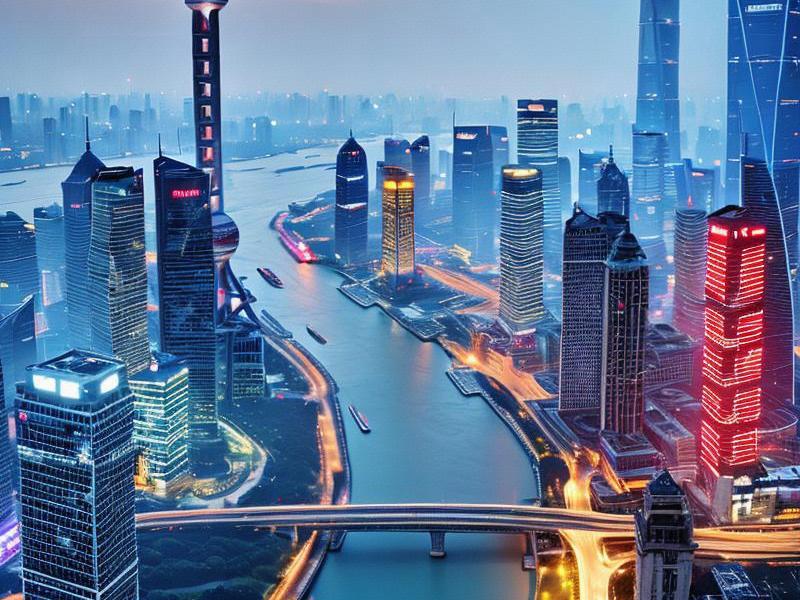Shanghai: A Global Metropolis with Endless Charm
⏱ 2025-04-27 00:52 🔖 上海龙凤419
📢0℃

Shanghai, often referred to as the "Pearl of the Orient," has a history that dates back thousands of years. Originally a small fishing village, it gradually grew into a major port city during the 19th century due to its strategic location at the mouth of the Yangtze River. The city's rapid transformation began in the late 19th and early 20th centuries when it became a concessions territory for various foreign powers, leading to a unique blend of architectural styles and cultural influences.
The Bund, a waterfront area along the Huangpu River, is a testament to Shanghai's colonial past. Here, visitors can admire the juxtaposition of historic European-style buildings and the modern skyscrapers of Pudong, which symbolize the city's economic rise. The iconic Oriental Pearl Tower and the futuristic Shanghai Tower stand as proud landmarks, showcasing Shanghai's ambition to be a global financial hub.
Urban development in Shanghai has been nothing short of remarkable. The city has successfully balanced its historical heritage with modern urban planning. The Pudong New Area, developed in the late 20th century, is a prime example of this balance. It houses some of the world's tallest buildings, including the Shanghai Tower, which stands at 632 meters, making it the tallest building in China and the second-tallest in the world.
Shanghai's transportation infrastructure is another aspect of its urban development that deserves attention. The city boasts one of the most extensive metro systems in the world, providing efficient and convenient travel options for its residents and visitors. Additionally, the Maglev train, which connects Pudong International Airport to the city center, is a marvel of modern engineering, offering a high-speed and smooth ride.
新夜上海论坛 Culturally, Shanghai is a melting pot of traditions and modernity. The city is known for its vibrant art scene, with numerous galleries, theaters, and music venues. The Shanghai Museum, housed in a former bank building, is renowned for its extensive collection of Chinese art, including ancient ceramics, calligraphy, and paintings. The city's literary heritage is also noteworthy, with figures like Lu Xun and Eileen Chang contributing to its rich literary history.
Shanghai's culinary scene is another highlight. The city is a paradise for food lovers, offering a wide range of cuisines from all over China and the world. From traditional Shanghainese dishes like Xiaolongbao (soup dumplings) and Shengjianbao (pan-fried buns) to international flavors, Shanghai's food scene is as diverse as its population. The city's night markets and bustling street food stalls provide an authentic taste of local life.
Economically, Shanghai is a powerhouse. It is one of China's most important financial centers, hosting the Shanghai Stock Exchange and numerous multinational corporations. The city's strategic location and well-developed infrastructure have made it a hub for trade and commerce. Shanghai's free trade zone, established in 2013, has further enhanced its status as a global trade center.
Innovation is at the heart of Shanghai's economic success. The city has been investing heavily in research and development, particularly in areas like artificial intelligence, biotechnology, and green energy. Zhangjiang Hi-Tech Park, often referred to as "China's Silicon Valley," is home to many high-tech companies and research institutions. Shanghai's commitment to innovation has positioned it as a leader in the global technology race.
上海龙凤419是哪里的
Shanghai's international influence extends beyond its economic achievements. The city has hosted numerous international events, including the World Expo in 2010, which attracted millions of visitors from around the world. The Expo showcased Shanghai's ability to organize large-scale events and its commitment to sustainable development.
Culturally, Shanghai has also been a bridge between China and the rest of the world. The city is home to a significant expatriate community, which contributes to its cosmopolitan atmosphere. International schools, foreign embassies, and multinational corporations have made Shanghai a hub for global interactions.
However, Shanghai's rapid development has not been without challenges. The city faces issues related to urbanization, such as housing shortages, traffic congestion, and environmental concerns. The government has been implementing various measures to address these challenges, including the development of satellite cities and the promotion of green initiatives.
上海贵族宝贝sh1314 One of the key strategies for sustainable urban development in Shanghai is the promotion of public transportation and the reduction of car usage. The city has been expanding its metro network and encouraging the use of electric vehicles. Additionally, Shanghai has been investing in green spaces and urban forests to improve air quality and enhance the quality of life for its residents.
Shanghai's cultural heritage is also being preserved through various initiatives. The city has been restoring historic buildings and neighborhoods, ensuring that they are integrated into the modern urban fabric. The Shanghai Historic Building Conservation Center plays a crucial role in this effort, providing expertise and resources for the preservation of historic structures.
In conclusion, Shanghai is a city that embodies the spirit of modernity while honoring its rich history. Its urban development, cultural heritage, economic innovation, and international influence make it a unique and dynamic metropolis. As Shanghai continues to grow and evolve, it remains a beacon of progress and a symbol of China's rise on the global stage.
Shanghai's Renaissance: A Journey Through the Modern Metropolis【梧桐树下的红妆与素手:上海知识女性的百年突围】Shanghai Beauties: A Glimpse into the Elegance and Diversity of Shanghai Women《海派佳人:上海美女的百年时尚演变史》Shanghai 4500: Quantum Delta Synergy and the Photonic Civilization MatrixShanghai Beauties: A Journey Through the Beauty of the City and Its People【夜色经济学:上海高端社交场所的百年嬗变】Shanghai 4550: Quantum Apex Aesthetics and the Galactic Femininity Nexus《潮汐之间:上海都市圈的文化褶皱》《鎏金年代:上海娱乐会所的时空折叠》

